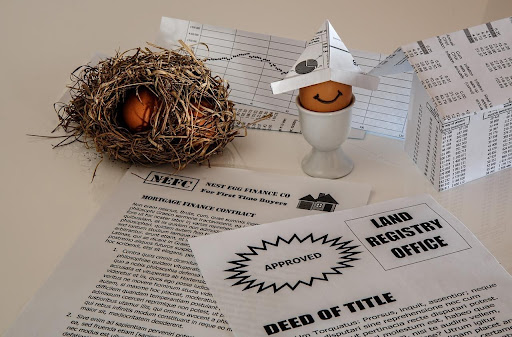
Tapping Your 401K
If you’re in the market to buy a house, but you may need a little help with the down payment – you’re not alone. You know you can still get a good deal, at least through the end of the year most likely, and you want to get in on it before it’s too late. The foreseeable future has a dim economic outlook, at this point. Then again, one really never knows what the future holds. In any case, you may have heard it’s possible to tap into some of your retirement funds like your 401K, to help with a house down payment. The short answer is yes you can, but it may not be the smartest decision. Let’s talk about using your 401K and the pros and cons of this option.
Option #1 – Withdraw Outright
There are two options when withdrawing outright from your 401K for a down payment on a house. You can either withdraw funds up to $50K, or half of your available balance. In addition, you are allowed to include employer contributions in the total amount you can access for withdrawing funds. You can withdraw outright, even though it’s disadvantageous to your future, under the “401K rules for hardship withdrawals”. This method of withdrawal doesn’t allow you to pay anything back, so you’ll miss out on that huge chunk of your retirement fund. Additionally, you will have to pay income tax on the amount of withdrawal and may be penalized another 10% for early withdrawal.
Here’s a summary of the pros and cons of this option:
- PRO: You are able to get the money for your down payment with little to no hassle and take advantage of a good deal now.
- CON: You have to pay taxes on the amount, as income – which could put you in a higher tax bracket and rate at tax time
- CON: If you are younger than 59-½ years old, you have to pay an additional 10% penalty for early withdrawal
- CON: You have no opportunity to pay the funds back to your 401K
- CON: You miss out on the tax-free earnings of years of accumulation
Option #2 – Borrow from Yourself
This option allows you to borrow the money from your 401K, and the interest you pay – typically 2 points over the prime rate – also is funded to your account. The maximum you can borrow is the same amount: up to $50K or half the balance, whichever is less. The problem with this option is the whole repayment process. You have to pay the loan back usually within 5 years, so your monthly payments are going to be steep – $833/month plus interest, and you have to disclose the loan and payment amount to any potential lender. This fact alone could cause you not to qualify for the mortgage loan, making the option unavailable to you. Lastly, if you leave your job for any reason, the loan amount is due in full by the time you pay taxes at the end of the year. You can ask for extensions, but it could still be a hardship. Summary of the pros and cons on this method of withdrawal are:
- PRO: You are able to get the money you need easily
- PRO: You pay back interest that goes into your own 401K account, enabling you to earn a little on the missing money until it’s returned
- CON: You have to pay the loan back within 5 years
- CON: You have to disclose the loan to the mortgage lender, which could have negative impacts on your loan approval
- CON: Your provider (i.e. employer) may not allow you to contribute until the loan is repaid, and you don’t enjoy the same perks on taxes etc. on loan payments
- CON: If you leave your job for any reason, the loan must be repaid in full by tax time, sans any extensions
- CON: If you do not pay the loan back on time, either way, it will trigger income tax due and the 10% penalty for early withdrawal
Additional Tips
As you can see for yourself, neither of these options is ideal, by any means. However, when you really need to come up with a down payment and you’ve exhausted all other options, it’s certainly one that’s viable. But if you have an IRA account, you should explore this option over the 401K. An IRA has special provisions for first time home buyers (or those who haven’t bought a house in 2 years or more). The first $10K can be disbursed tax penalty free, for a home purchase. A qualified financial hardship is also penalty free for the first $10K. Look into this or other options before making a decision that will negatively impact your future.

